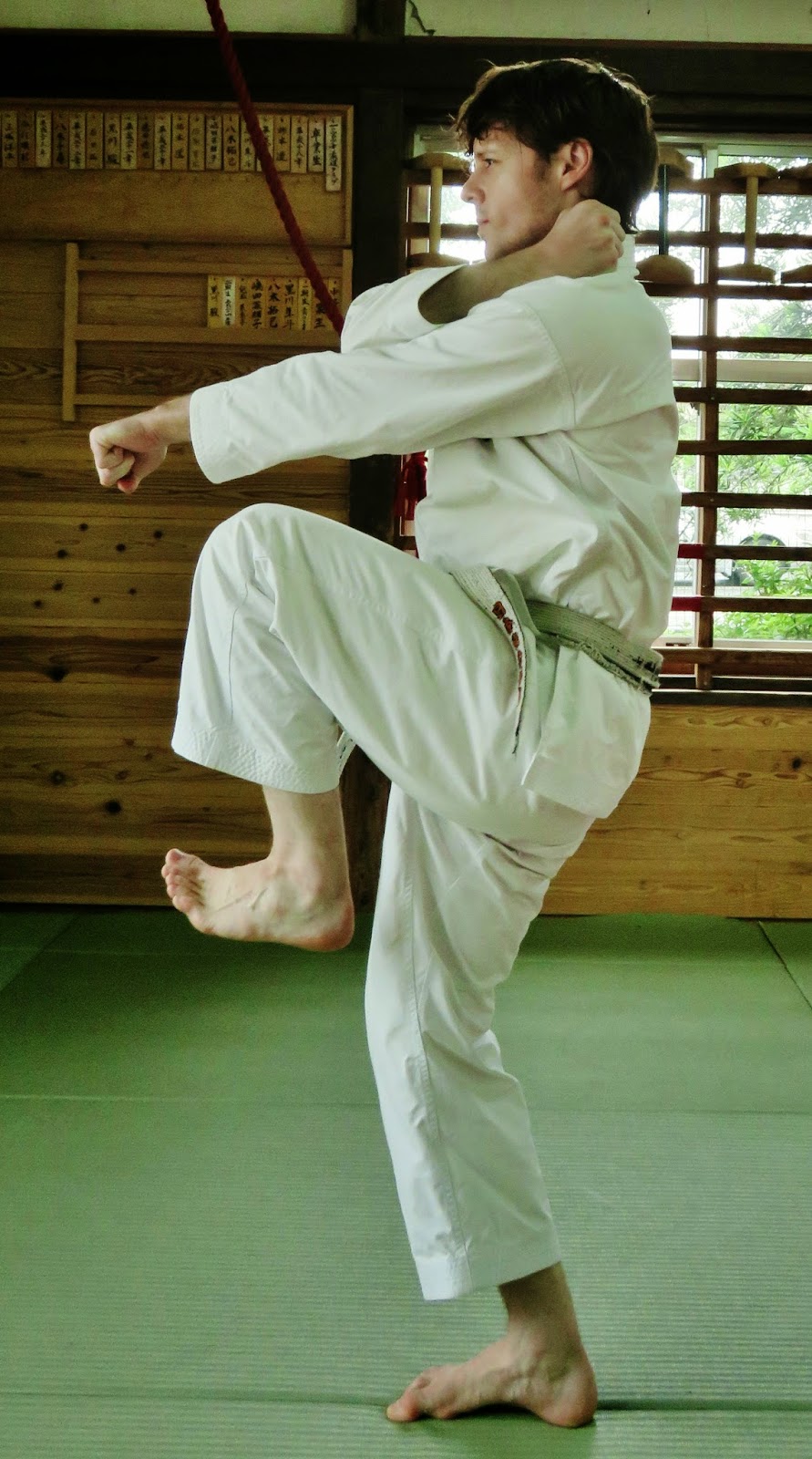 |
| Kihon-geiko: the beginning, end and full circle of Karate-Do. |
 |
| Movement 44 my tokui-gata: Gojushiho Dai. |
True karate-do is budo, not
gymnastics, nor a game of points: The techniques of traditional karate-do have never been
about accumulating points or `merely appearing to be strong’; rather, they are
all about achieving ichigeki-hissatsu (the capacity to `finish an adversary
with a single blow’). Consequently, this means that, in the technical sense
“…the body must be controlled, as much as possible, to heighten one’s chances
of achieving `ippon-waza’”. Naturally instructors have differing methods for
developing this acute level of control (via their self-training and, indeed,
when they instruct classes). Today I’d briefly like to share my generic
approach/training methodology, which underpins my practice of karate-do. It is
what I’ve dubbed ‘A-E training’ and is based on ‘everything being broken down
into five distinct parts’; furthermore, it coincidentally (and amusingly)
relates to the acronym `AE’ (Accident and Emergency). Needless to say, this is
the hospital department you should be aiming to send an attacker (or
attackers), should you need to use your karate in self-defence.
What is `A-E training’? `A-E Training’ is quite simply
breaking down all karate techniques into five segments or parts. These are as
follows: A. Pre-movement; B. Initiation/start of movement; C. Mid-movement; D. Impact point (target penetration); and E. Completion of movement (a decisive return to stillness).
Accordingly, this practice forms a full circle, from inaction returning to
inaction: with the technique existing `in the middle’. In this way, it
addresses ‘not telegraphing’ your movement; the order of joints/muscles used in
your action; the complete trajectory of your technique; the point of impact;
and the follow through ‘to completion’, which intrinsically pertains to ‘balance’
and, ultimately, `recovery’. Of course, you could say that `A-E training’ also
addresses other areas, and it certainly can; all the same, from my personal experience,
the aforementioned technical aspects ‘are best optimised through this form of
practice’. As I always say to my students in New Zealand, and around the world,
“don’t listen to me, try for your selves”.
 |
| Enpi kata: Migi jodan age-zuki. |
Further practice – utilising `A-E
training’: On the
sheer `physicality’ front, acceleration/deceleration from `A-B’, `B-C’, `C-D’
and `D-E’ can be studied. For example, full-speed then freeze on the four
points following `A’ (the pre-movement position). It is worth mentioning here “…that
one in theory could make this `10 part practice’ (i.e. `A-J training’)”; however, I’ve generally found
that beyond ‘five-part-practice’ tends to be unproductive. By and large, this
can be best be found when practising with explosiveness (accordingly this is
because the range of motion is too short when one exceeds `the three active
stages’ of karate techniques; that is, ‘B to D’); hence, beyond `A-E training’
I prefer to deconstruct the drill from A-D, A-C, A-B, then utilise `fluid’
practice.
 |
| `A-E training' with jiyu kumite no kihon. |
Yet… further practice utilising `A-E
training’: I won’t
discuss this too much in depth; however, it involves applying each `active
stage’ against a makiwara, sandbag and so forth. In this way we can drill
techniques to be effective at varying ranges; moreover, subconsciously
understand their strengths and shortcomings depending on timing, and maai
(meeting distances).
 |
| The late and great JKA Shuseki-Shihan, Nakayama Masatoshi Sensei. |
On the whole, and at
the very least, I hope this article has offered some food for thought;
moreover, that is goes beyond the realms of your thoughts and leads to the physical
improvement of your karate. All the best, André.
© André Bertel. Aso-shi,
Kumamoto-ken. Japan (2014).
No comments:
Post a Comment